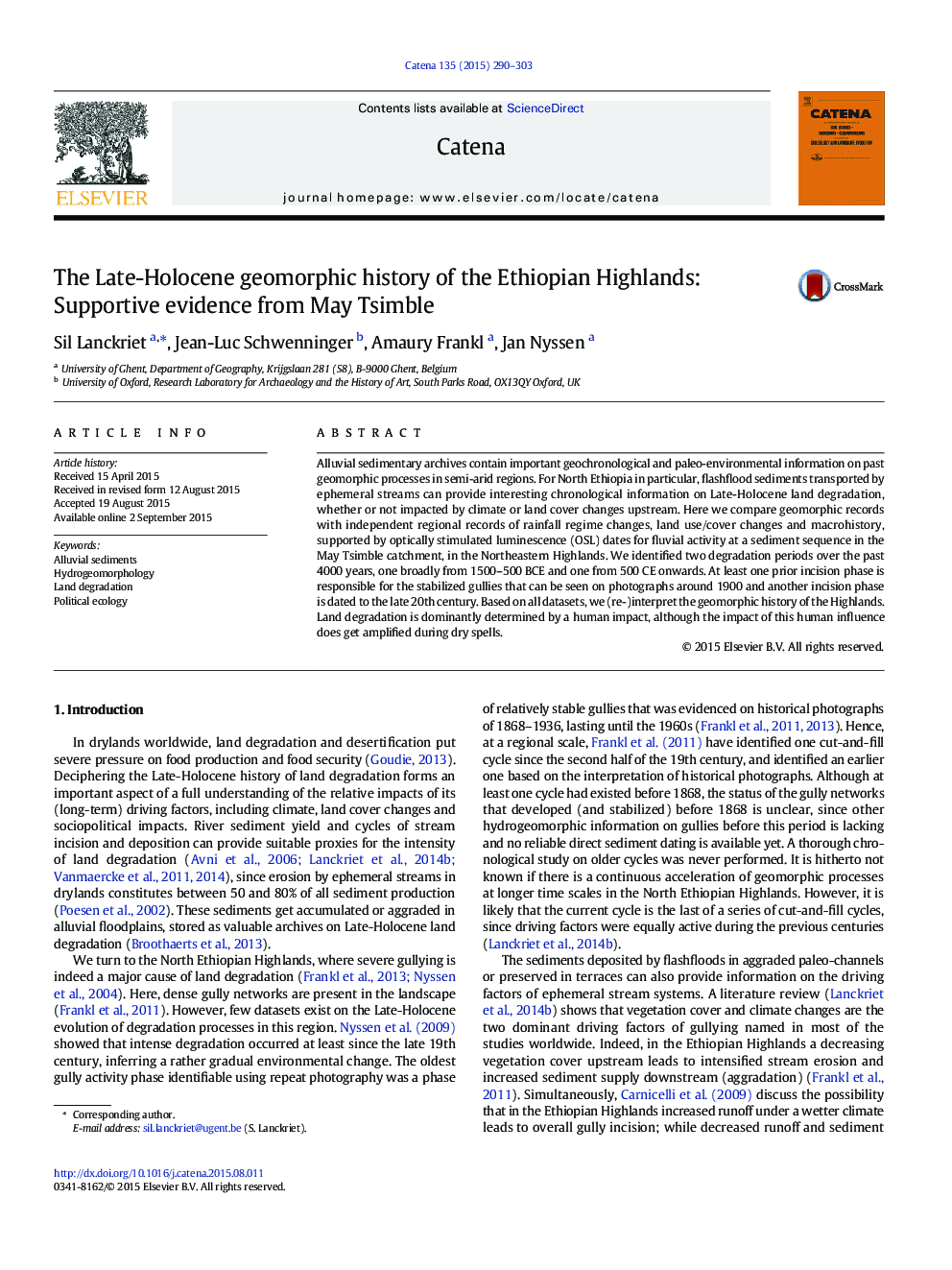| Article ID | Journal | Published Year | Pages | File Type |
|---|---|---|---|---|
| 4571101 | CATENA | 2015 | 14 Pages |
•We compare geomorphic and climatic records from the Ethiopian Highlands.•We provide additional optically stimulated luminescence dates.•The human impact on the environment gets amplified during dry spells.
Alluvial sedimentary archives contain important geochronological and paleo-environmental information on past geomorphic processes in semi-arid regions. For North Ethiopia in particular, flashflood sediments transported by ephemeral streams can provide interesting chronological information on Late-Holocene land degradation, whether or not impacted by climate or land cover changes upstream. Here we compare geomorphic records with independent regional records of rainfall regime changes, land use/cover changes and macrohistory, supported by optically stimulated luminescence (OSL) dates for fluvial activity at a sediment sequence in the May Tsimble catchment, in the Northeastern Highlands. We identified two degradation periods over the past 4000 years, one broadly from 1500–500 BCE and one from 500 CE onwards. At least one prior incision phase is responsible for the stabilized gullies that can be seen on photographs around 1900 and another incision phase is dated to the late 20th century. Based on all datasets, we (re-)interpret the geomorphic history of the Highlands. Land degradation is dominantly determined by a human impact, although the impact of this human influence does get amplified during dry spells.
